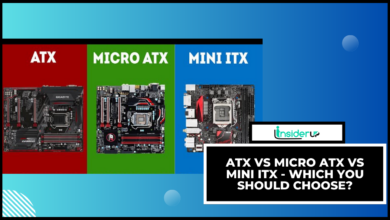Essential Developing Steps for Custom Online Learning Platform

eLearning software development solutions are one of the options that can help you create custom eLearning platforms that meet your specific needs. By outlining a relevant solution and testing it on real users, you can get better before launching your eLearning platform to the world.
1. eLearning software development solutions
eLearning software development solutions that offer a comprehensive and fully customizable eLearning platform can be difficult to find. While many eLearning providers offer some form of customization, few offer the ability to tailor the eLearning experience to the specific needs of an organization. However, with a little research, it is possible to find eLearning software development solutions that can provide a custom online learning platform.
One such solution is Moodle, an open-source eLearning platform that can be customized to meet the specific needs of an organization. Moodle has a wide range of modules and plugins that can be used to create a unique eLearning experience. In addition, Moodle’s flexibility allows it to be easily integrated with other systems, making it an ideal solution for organizations that want to create a custom online learning platform.
Another eLearning software development solution that offers a custom online learning platform is Blackboard Learn. Blackboard Learn is a powerful eLearning platform that offers a wide range of features and services. Blackboard Learn can be customized to meet the specific needs of an organization, making it an ideal solution for those who want to create a custom online learning platform.
When considering eLearning software development solutions, it is important to consider the needs of the organization and the eLearning platform that will be created. By doing this, organizations can ensure that they select the eLearning software development solution that best meets their needs.
2. How to find the right eLearning software development partner
eLearning software development can be a complex and specialized process. It’s important to find a partner who has the experience and expertise to deliver the right solution for your needs. Here are some things to look for in an eLearning software development partner:
– A proven track record in eLearning software development. Look for a partner with a portfolio of successful eLearning projects.
– The ability to understand your specific eLearning needs. eLearning requirements can vary widely, so it’s important to find a partner who will take the time to understand your specific needs and objectives.
– A commitment to quality. eLearning software should be robust and reliable. Make sure your partner has a quality assurance process in place to ensure that the final product meets your expectations.
– Flexibility and adaptability. eLearning needs can change over time. Look for a partner who is flexible and able to adapt their solutions to meet evolving requirements.
By taking the time to find the right eLearning software development partner, you can be confident that your eLearning project will be successful.
3. eLearning software development process
eLearning software development is a process that involves creating software solutions that can be used for eLearning purposes. There are many different stages involved in eLearning software development, from initial planning and design to the final testing and deployment of the software. In order to ensure that the eLearning software development process runs smoothly, it is important to have a clear understanding of the various stages involved and the tasks that need to be completed at each stage. With a clear plan and a team of experienced eLearning developers, it is possible to create high-quality eLearning software solutions that can be used by businesses and organizations of all sizes.
eLearning software development generally follows a similar process to traditional software development, with some key caveats and considerations unique to eLearning. The first stage of eLearning software development is analysis, during which the needs of the target audience are assessed and a solution is proposed. The second stage is design, during which the eLearning solution is created and mapped out. The third stage is development, during which the eLearning solution is actually built. The fourth and final stage is deployment, during which the eLearning solution is made available to users. Throughout these stages, it is important to keep in mind the specific needs of eLearners in order to create a successful solution.
4. eLearning software testing and quality assurance
eLearning software testing and quality assurance help to ensure that the eLearning software is fit for purpose and meets the needs of the end users. eLearning software testing and quality assurance also help to identify any potential bugs or errors in the eLearning software before it is released to the public. Without this stage in the software development cycle, eLearning software development would be a much more risky and expensive proposition.
In order to ensure the quality of your custom learning platform, it is important to test the software thoroughly. Here are some key tips and hacks for software testing and quality assurance:
- Make sure to test all aspects of the software, including the user interface, functionality, performance, security, and compatibility.
- Use a variety of testing tools and techniques, such as unit testing, functional testing, and load testing.
- Create detailed test cases that cover all expected use cases.
- Execute tests frequently and track results carefully.
- Invest in a good bug tracking system to keep track of all issues that are discovered during testing.
By following these tips, you can help ensure that your custom learning platform is of high quality and performs as expected.
Conclusion
There are many different eLearning software development solutions available, and each has its own advantages and disadvantages. It is important to choose the right eLearning software development solution for your needs. Here are some key tips and hacks for eLearning software testing and quality assurance:
– Make sure that you test eLearning content on all popular browsers and devices. This will help to ensure that your content can be accessed by everyone.
– Pay attention to interface design. eLearning content should be easy to navigate and use.
– Always test eLearning content before it is published. This will help to ensure that there are no errors or problems with the content.
– Make sure that eLearning content is accessible to people with disabilities. This includes people who are visually impaired or have hearing impairments.
– eLearning software development is a complex process. It is important to work with a team of experienced professionals who can help you create high-quality eLearning content.
-Finally, eLearning software testing and quality assurance solutions are essential for ensuring that eLearning software is of high quality and fit for purpose.




